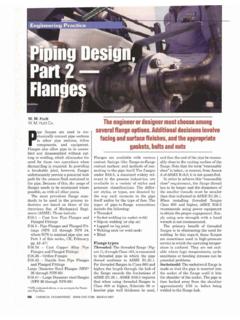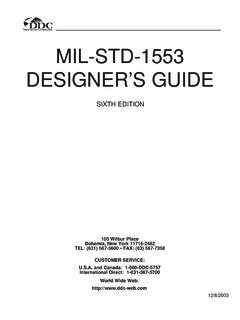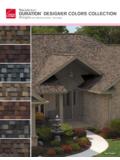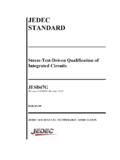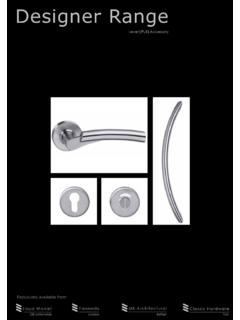Transcription of A Designer Speaks - Educational Designer
1 lovitt , C., Clarke, D. (2011) A Designer Speaks . Educational Designer , 1(4). ISDDE 2011 - all rights reserved E D U C AT I O N A L D E S I G N E R. JOURNAL OF THE INTERNATIONAL SOCIETY FOR DESIGN AND DEVELOPMENT IN EDUCATION. A Designer Speaks : charles lovitt and Doug Clarke The features of a rich and balanced mathematics lesson: Teacher as Designer Abstract Look at any 10 classroom lessons. Two might be quite forgettable, about six might be passable, but one or two might, by general acclamation from teachers, be considered outstanding. By analysing what we consider to be high quality lessons, we contend that it is possible to distil out a set of practical design features and qualities that are generalisable and transferable to many lessons.
2 We would claim that in this process, working alongside teachers, there is the opportunity to empower them to create their own rich and balanced classroom lessons. We will analyse three selected lessons chosen from classrooms. Each in our opinion passes the test of being both rich and balanced. What do we mean by rich and balanced? Many authors have attempted to define the term rich in relation to mathematics tasks or lessons (see, , Downton, Clarke, Knight, & Lewis, 2006; Flewelling, & Higginson, 2001). Although it is very rare for a single task or lesson to have all of these features, the following are often mentioned: It draws on a range of important mathematical content.
3 It is engaging for students;. All students are able to make a start, as it caters for a range of levels of understanding;. It can be successfully undertaken using a range of methods or approaches;. It provides a measure of choice or openness, leading to a sense of student ownership;. It involves students actively in their own learning;. It shows the way in which mathematics can help to make sense of the world;. It makes appropriate and effective use of technology;. Page 1. lovitt , C., Clarke, D. (2011) A Designer Speaks . Educational Designer , 1(4). It allows students to show connections they are able to make between the concepts they have learned.
4 It draws the attention of students to important aspects of mathematical activity; and It helps teachers to decide what specific help students may require in the relevant content areas, or ways in which students might be extended. There are many such lists in mathematics education articles, and in working with teachers, we have encouraged them to put the lessons we share with them and the ones they develop themselves under the microscope, and to ask the questions, Is this lesson rich? What are the features which make it so? These features therefore provide a kind of checklist, and thus form our design elements in developing lessons. In the following discussion of three particular lessons, we will summarise the features which teachers identify in relation to the lessons.
5 When we refer to balanced, we mean that the features above work in harmony , are mutually self-supportive and not over or under weight in any aspect. Many traditional text-book type lessons are arguably overweight in the rush to skill development, while ignoring a range of other equally important teaching and learning principles. The balancing act is needed within any lesson, and by implication, across any set of lessons. We will explore the way in which the three lessons we discuss can be regarded as balanced. The three lessons which we encourage the reader to place under the microscope in this article are titled: Temperature graphs Maths in motion Mathematics of Lotto In each, we will present a description of the lesson followed by a critique designed to identify the elements of the design profile, and also compare and contrast the lesson with an equivalent stereotypical textbook version.
6 Our context In the 1980s, there were major concerns with the teaching of mathematics in Australia, particularly among teachers in the middle years of schooling (Grades 5-8): We are confident that the following list generated at that time will come as no surprise to readers: Maths was seen as boring and irrelevant;. Not enough thinking nor genuine understanding was required of students;. The topic was too abstract;. Fear of failure and poor attitudes were evident;. Maths was seen as elitist, and designed for tertiary bound students only;. There was too much content to address and not enough time to do so;. Page 2. lovitt , C., Clarke, D. (2011) A Designer Speaks .
7 Educational Designer , 1(4). Assessment approaches were too narrow;. Catering for a wide ability range was very challenging; and Teachers were struggling with problematic parent and community expectations. The authors first worked together jointly running a national program, titled the Mathematics Curriculum and Teaching Program (MCTP, lovitt , Stephens, Clarke &. Romberg, 1990). In this project, we had the opportunity to consider how best to address the above issues, in conjunction with teachers, mathematics consultants and education systems. Our response Our focus was, and in many ways still is, to use the classroom lesson as the basis of professional learning conversations.
8 We attempted to capture examples of good practice from around Australia by documenting lessons, sharing these as works in progress , and encouraging teachers in supportive professional learning environments, to consider how they could both enhance the lessons, and more particularly expand their personal comfort zone or repertoire of teaching strategies. This personal repertoire of features can be called their design profile the personal collection from which a teacher draws in creating (designing) learning experiences. The model shown in Figure 1 was used as a basis for these conversations (Owen, Johnson, Clarke, lovitt , & Morony, 1988, p. 4.).
9 Figure 1: Model from Owen, Johnson, Clarke, lovitt , & Morony, 1988, p. 4. Each teacher comes to any learning situation with their personal current practice or comfort zone'. As teachers worked through lessons in the role of the student in professional learning settings, and subsequently trialled them in their own classrooms, they were encouraged to seriously scrutinise the lessons for the features they contained, particularly those new to themselves, with a view to ultimately expanding their comfort zone or teaching repertoire. In our documentation for a given lesson, which always went through many iterations, Page 3. lovitt , C., Clarke, D. (2011) A Designer Speaks .
10 Educational Designer , 1(4). and, in one sense, was never finished, we attempted to tell the story of the lesson, which was always an amalgam of the ways in which the lesson has played out in a variety of settings. We used photographs, sketches, samples of student work, comments from teachers, and insights from trialling to paint the picture of a lesson, in a way that the reader could hopefully visualise. MCTP also focused significantly on the professional development (PD) settings in which these lesson conversations' could occur. We analysed existing PD models from around Australia, developed a set of criteria for effective PD (see Clarke, 1994).
